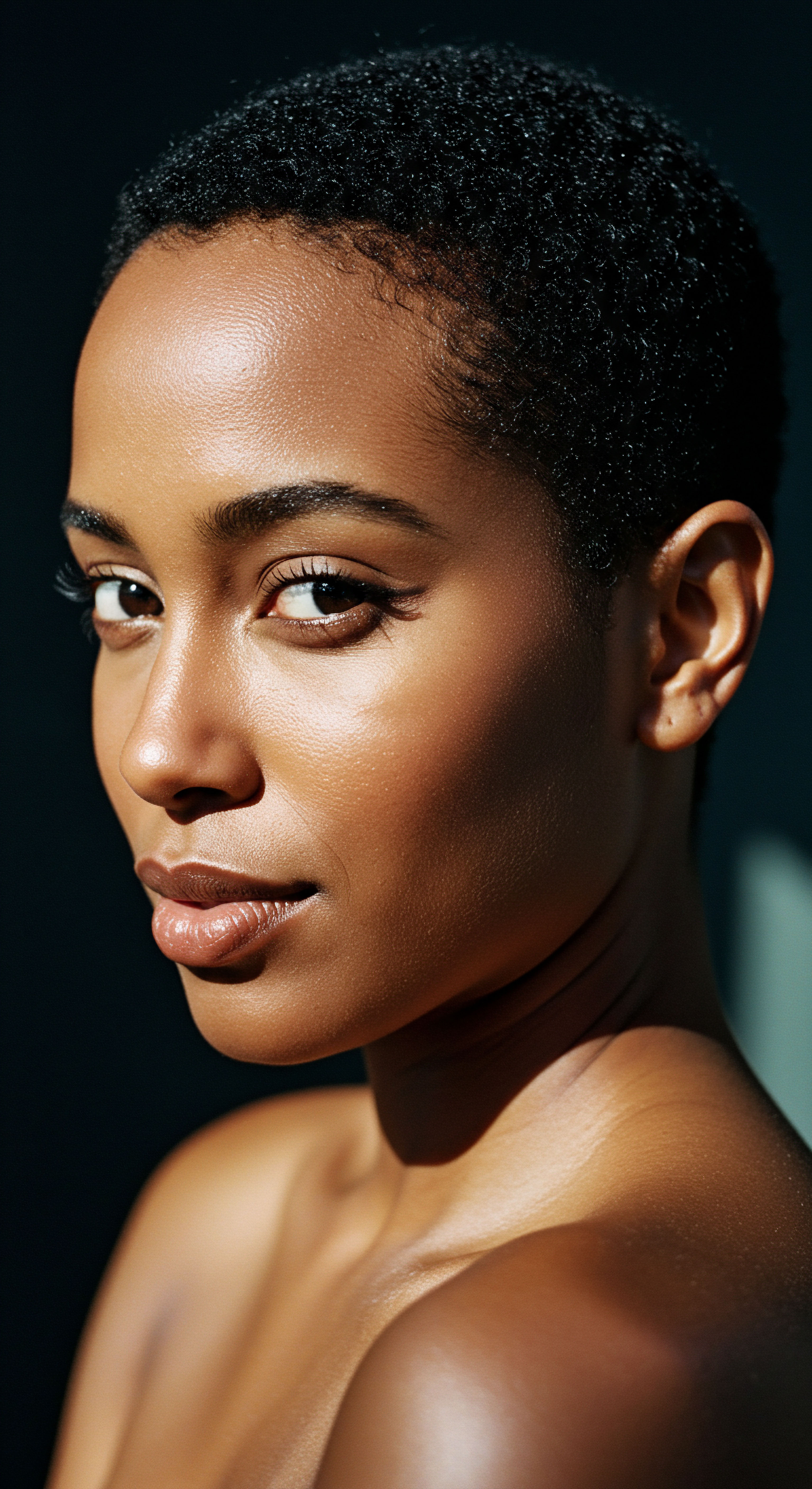
Roots
The journey into understanding textured hair often begins with a quiet wonder, a curiosity about the very strands that frame our faces and tell tales of heritage and resilience. For those with coils, kinks, and waves, the hair itself is a universe of intricate formations, each strand a testament to natural design. Within this universe, certain botanical allies have long held a place of reverence, their properties whispered through generations.
Among these, henna, with its earthy scent and vibrant pigment, stands as a particularly compelling figure. The query, “Can pure henna relax curl?” invites us not just to a scientific inquiry, but to a deeper consideration of how ancient practices intersect with modern understanding of hair’s fundamental nature.
To truly appreciate the interaction between henna and textured hair, one must first grasp the foundational architecture of a hair strand. Each individual hair is a complex biological structure, composed primarily of a protein called Keratin. This keratin forms three main layers ❉ the cuticle, the cortex, and sometimes the medulla. The outermost layer, the Cuticle, consists of overlapping, scale-like cells, much like shingles on a roof.
These cuticular scales protect the inner layers. Beneath the cuticle lies the Cortex, the heart of the hair, where the majority of the hair’s mass resides. The cortex contains keratin bundles arranged in a specific helical structure, and it is within this layer that the hair’s natural curl pattern is determined by the distribution of disulfide bonds and the shape of the hair follicle. The innermost layer, the Medulla, is not present in all hair types, particularly finer strands.
The distinct curl patterns observed in textured hair types – from loose waves to tight coils – are a consequence of the unique shape of the hair follicle from which the hair emerges, and the uneven distribution of keratin and disulfide bonds along the hair shaft. A flatter, more elliptical follicle typically produces curlier hair, while a rounder follicle yields straighter strands. The uneven distribution of sulfur-rich amino acids, which form disulfide bonds, creates varying tension along the hair fiber, causing it to coil or wave.
Understanding the inherent structure of textured hair is the initial step in discerning how external agents like henna might interact with its natural formation.
When we speak of pure henna, we refer to the powdered leaves of the Lawsonia inermis plant. The active dyeing compound in henna is Lawsone, or 2-hydroxy-1,4-naphthoquinone. When henna powder is mixed with an acidic liquid, lawsone molecules are released. These molecules are relatively small and have a particular affinity for the keratin protein in hair.
Unlike synthetic dyes that often penetrate deep into the cortex to alter color, lawsone primarily binds to the keratin in the cuticle and the outermost layers of the cortex. This binding process forms a protective, translucent layer over the hair shaft.

The Essential Lexicon of Textured Hair
Navigating the world of textured hair care necessitates a precise understanding of its unique vocabulary. Terms such as Porosity, which refers to the hair’s ability to absorb and retain moisture, are fundamental. High porosity hair, with its more open cuticle, readily absorbs water but also loses it quickly. Low porosity hair, with its tightly bound cuticle, resists moisture absorption but retains it well once hydrated.
- Density ❉ The number of individual hair strands on one’s head.
- Elasticity ❉ The hair’s capacity to stretch and return to its original length without breaking.
- Curl Pattern ❉ The shape of the hair strand, often categorized using systems like the Andre Walker Type System (e.g. 3A, 4C), though many prefer more descriptive terms.
The natural growth cycle of hair also plays a role in how treatments are perceived. Hair undergoes three main phases ❉ Anagen (growth), Catagen (transitional), and Telogen (resting and shedding). Any alterations made to the hair, whether through styling or botanical applications, affect the hair that is currently growing and existing. New growth will always return to its natural state, unaffected by previous treatments, a concept important to remember when considering lasting changes to curl patterns.
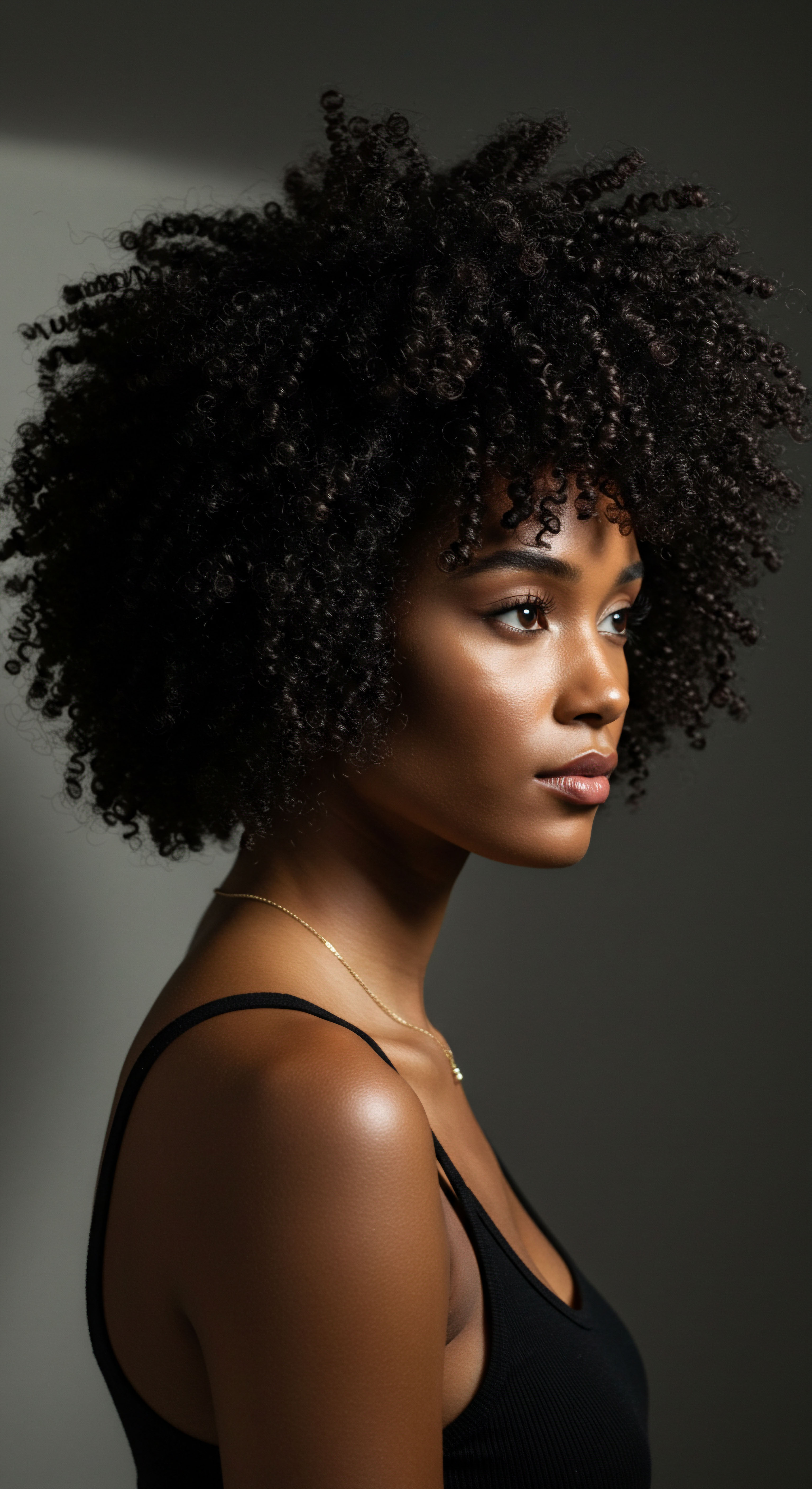
Ritual
Stepping from the fundamental understanding of hair’s structure, we arrive at the realm of ritual – the intentional practices and applications that shape our hair’s appearance and health. For many, the use of henna is not merely a cosmetic choice but a practice rich with cultural significance, passed down through generations. This section considers how these applications, particularly pure henna, interact with the inherent qualities of textured hair, addressing the persistent inquiry about its potential to alter curl.
The application of pure henna, traditionally prepared as a paste, involves coating the hair strands and allowing the lawsone to bind with the keratin. This process is distinct from chemical relaxers, which actively break and reform the hair’s disulfide bonds to permanently alter its structure. Henna, conversely, works by depositing its dye molecule onto the hair’s surface and outer cortex. This creates a protective layer, effectively thickening each strand.
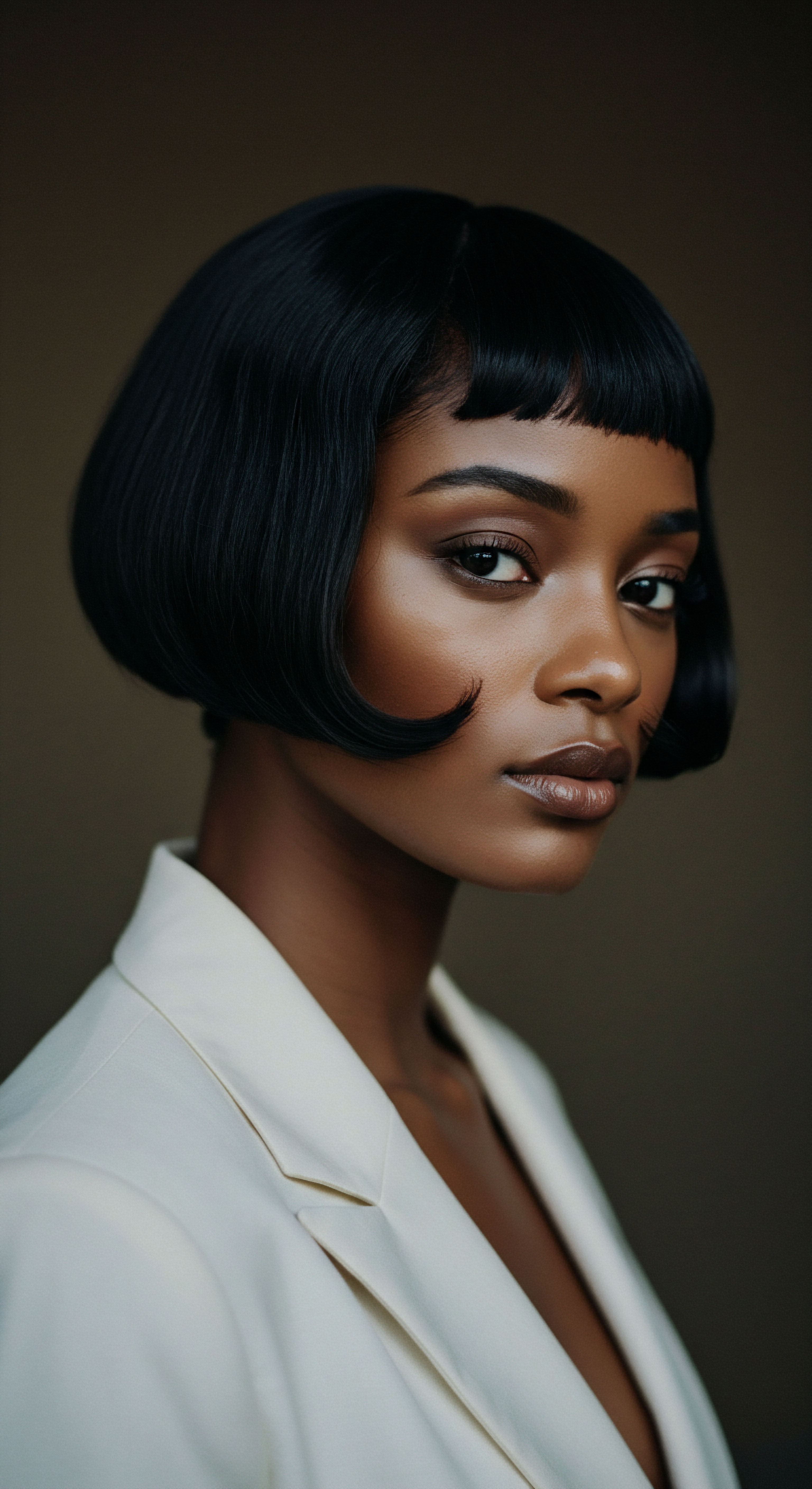
How Does Henna Affect Curl Appearance?
The perception that henna can “relax” or loosen curls often stems from the physical changes it imparts upon the hair fiber. When lawsone binds to keratin, it forms a coating that adds weight and a degree of rigidity to the hair strand. This added mass can cause coils and curls to stretch slightly under their own weight, leading to a less defined, elongated appearance. It is a mechanical effect, not a chemical alteration of the curl pattern itself.
Consider a tightly coiled spring. If you were to coat that spring with a thin, hardening layer, it might not bounce back with the same vigor or might appear slightly stretched. The spring’s inherent structure remains, but its dynamic movement is dampened.
Similarly, henna’s coating can reduce the hair’s natural springiness and elastic recoil, leading to what some describe as a loosening of their curl. This is particularly noticeable in looser curl patterns, where even a slight reduction in elasticity can visibly alter the curl’s shape.
Henna’s interaction with hair involves a surface coating that adds weight and rigidity, which can subtly influence the visible shape and spring of natural curls.
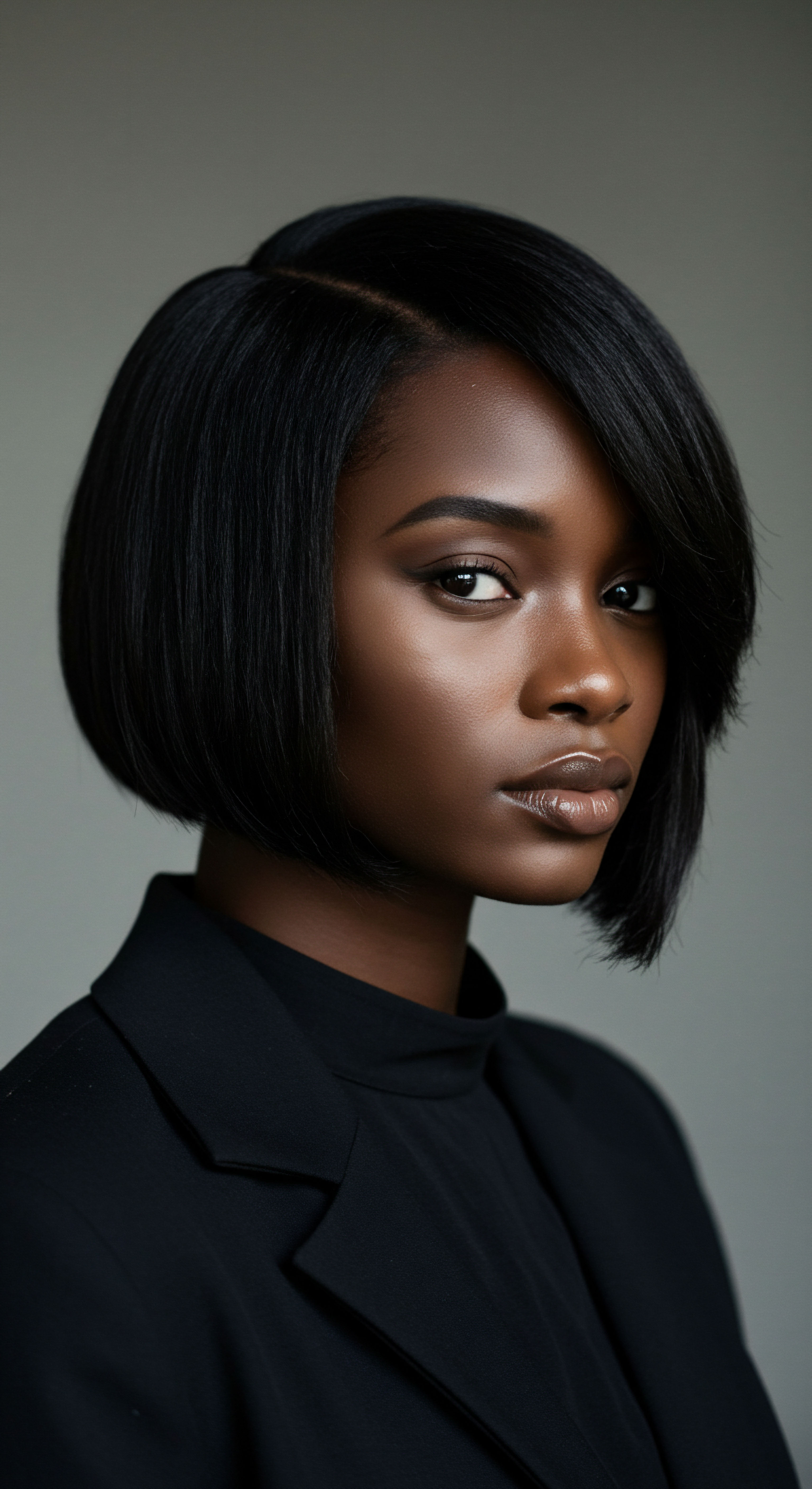
Traditional Application and Modern Considerations
Traditional henna applications often involve lengthy processing times, sometimes hours, allowing for maximum lawsone uptake. The paste is applied meticulously, section by section, ensuring even coverage. After rinsing, the hair typically feels thicker and may appear darker, with a reddish tint. For textured hair, this thickening can be a desired effect, adding volume and strength.
However, it is important to note that henna can also feel drying to some hair types, particularly if not prepared with moisturizing agents or followed by a deep conditioning treatment. The rigidity it imparts can, in some cases, make hair feel less pliable. Understanding these tactile changes, alongside the visual ones, is key to managing expectations regarding henna’s impact on curl. The goal with textured hair care is often to maintain softness and flexibility, and while henna offers many benefits, its effects on hair’s pliability merit careful consideration.
The debate around henna and curl relaxation highlights a distinction between chemical modification and physical alteration. While chemical relaxers disrupt the very bonds that dictate curl, henna acts as an external modifier. The perception of loosened curls is often a result of this physical interaction, where the added substance and rigidity subtly reshape the hair’s natural inclination to coil.

Relay
Having explored the fundamental nature of hair and the practicalities of henna application, we now move to a more sophisticated analysis, one that delves into the intricate scientific underpinnings and cultural nuances surrounding henna’s impact on textured hair. The question of whether pure henna can relax curls demands a rigorous, multi-dimensional investigation, moving beyond anecdotal observations to scientific inquiry and contextual understanding.

The Chemical Dance of Lawsone and Keratin
At a molecular level, the interaction between lawsone and keratin is a fascinating chemical dance. Lawsone molecules, upon release from the henna leaf powder, are electrophilic, meaning they are attracted to electron-rich sites. Keratin, being a protein, contains numerous nucleophilic groups, particularly the amino acids cysteine, lysine, and arginine.
Lawsone primarily forms a covalent bond with the amino groups of lysine and arginine residues, and to a lesser extent, the sulfhydryl groups of cysteine. This binding occurs within the cuticle and the outer layers of the cortex, creating a robust, stable complex.
Crucially, this binding mechanism does not involve the breaking of Disulfide Bonds. Disulfide bonds, formed between two cysteine amino acids, are the primary cross-links responsible for the hair’s structural integrity and its curl pattern. Chemical relaxers, by contrast, function precisely by breaking these disulfide bonds and then reforming them in a straightened configuration. Henna’s action is different; it adds a new layer of material and forms new covalent bonds with the existing keratin structure, rather than altering the core disulfide network that dictates curl.
Henna’s effect on hair involves the binding of lawsone to keratin, forming a coating that influences strand mechanics without chemically altering disulfide bonds.

Can Henna Truly Loosen a Curl? A Mechanical Perspective
While henna does not chemically relax hair, its cumulative effect on the hair fiber’s mechanical properties is what gives rise to the perception of loosened curls. A study published in the Journal of Cosmetic Science (2007) by L.R. Jachowicz and S.L. Jachowicz examined the mechanical properties of hair treated with various natural dyes, including henna.
Their research indicated that repeated applications of henna led to a measurable Increase in the Bending Modulus of hair fibers. This means the hair became stiffer and less pliable.
This increased rigidity directly impacts the hair’s ability to coil tightly. Imagine a piece of flexible wire that is then coated with a thin, hard shell. While the wire’s original shape is still there, its ability to bend and spring back is reduced. For textured hair, this translates to curls that might appear elongated, less springy, and with a wider diameter.
It is not a permanent change to the follicle’s shape or the internal disulfide bond arrangement, but a modification of the hair shaft’s physical response to stress and gravity. The effect is cumulative; the more frequently henna is applied, the more pronounced this stiffening and elongation might become, as layers of lawsone-keratin complexes build upon each other.
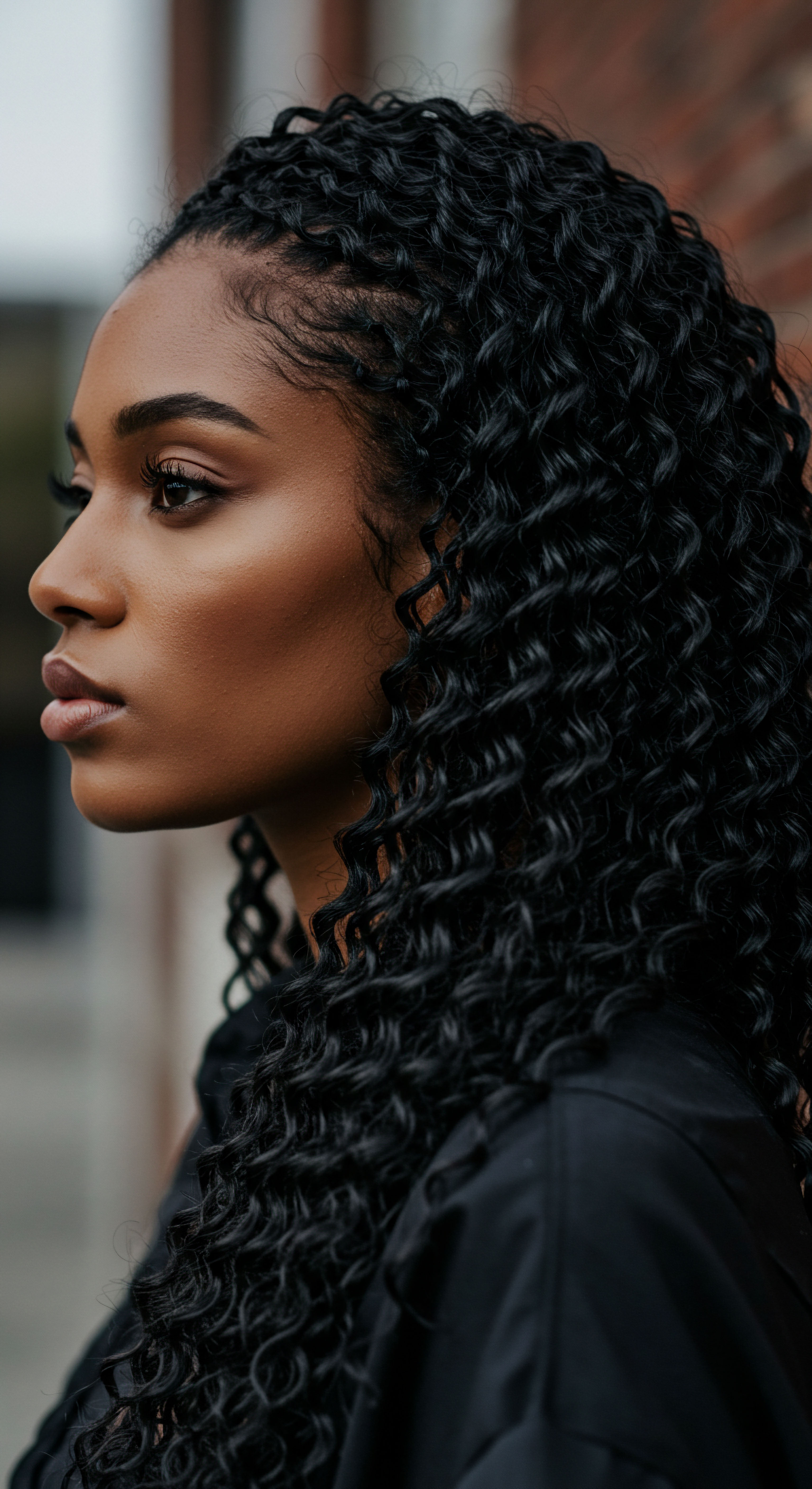
Long Term Effects and User Experience
The long-term use of pure henna on textured hair often presents a dichotomy of experiences. Many users celebrate the enhanced strength, reduced breakage, and rich color that henna imparts. The protective coating can indeed shield the hair from environmental damage.
However, others report a feeling of increased dryness, a reduction in the hair’s natural bounce, and a more difficult detangling process due to the added rigidity. This highlights the importance of individual hair characteristics and the need for a balanced regimen that includes deep conditioning to counteract any potential stiffening.
| Property Disulfide Bonds |
| Chemical Relaxer Broken and reformed |
| Pure Henna Unaffected |
| Property Hair Shape Change |
| Chemical Relaxer Permanent chemical alteration |
| Pure Henna Mechanical alteration of fiber rigidity |
| Property Hair Thickness |
| Chemical Relaxer Can reduce |
| Pure Henna Can increase (coating) |
| Property Elasticity |
| Chemical Relaxer Significantly reduced |
| Pure Henna Reduced (stiffening) |
| Property Reversibility |
| Chemical Relaxer Irreversible |
| Pure Henna Not reversible on treated hair; new growth unaffected |
| Property Key differences in how treatments alter hair structure and properties. |
From a cultural standpoint, henna has been used for millennia across various regions, not primarily as a curl relaxer, but for its dyeing, conditioning, and even medicinal properties. Its use in hair traditions often aligns with rituals of beautification, celebration, and spiritual significance. The contemporary discussion around its curl-altering effects represents a modern lens applied to an ancient practice, often driven by a desire to modify natural texture without harsh chemicals.
Ultimately, pure henna does not possess the chemical machinery to truly relax a curl in the same way a chemical relaxer does. What it does is add a layer of stable, hardened protein-dye complex to the hair shaft, subtly changing its mechanical response. This can result in a perceived loosening or elongation of the curl, particularly with repeated applications, a phenomenon rooted in the physics of a stiffer fiber rather than a chemical transformation of the hair’s inherent structure. The distinction is a vital one for anyone seeking to understand the true impact of this revered botanical on their textured strands.
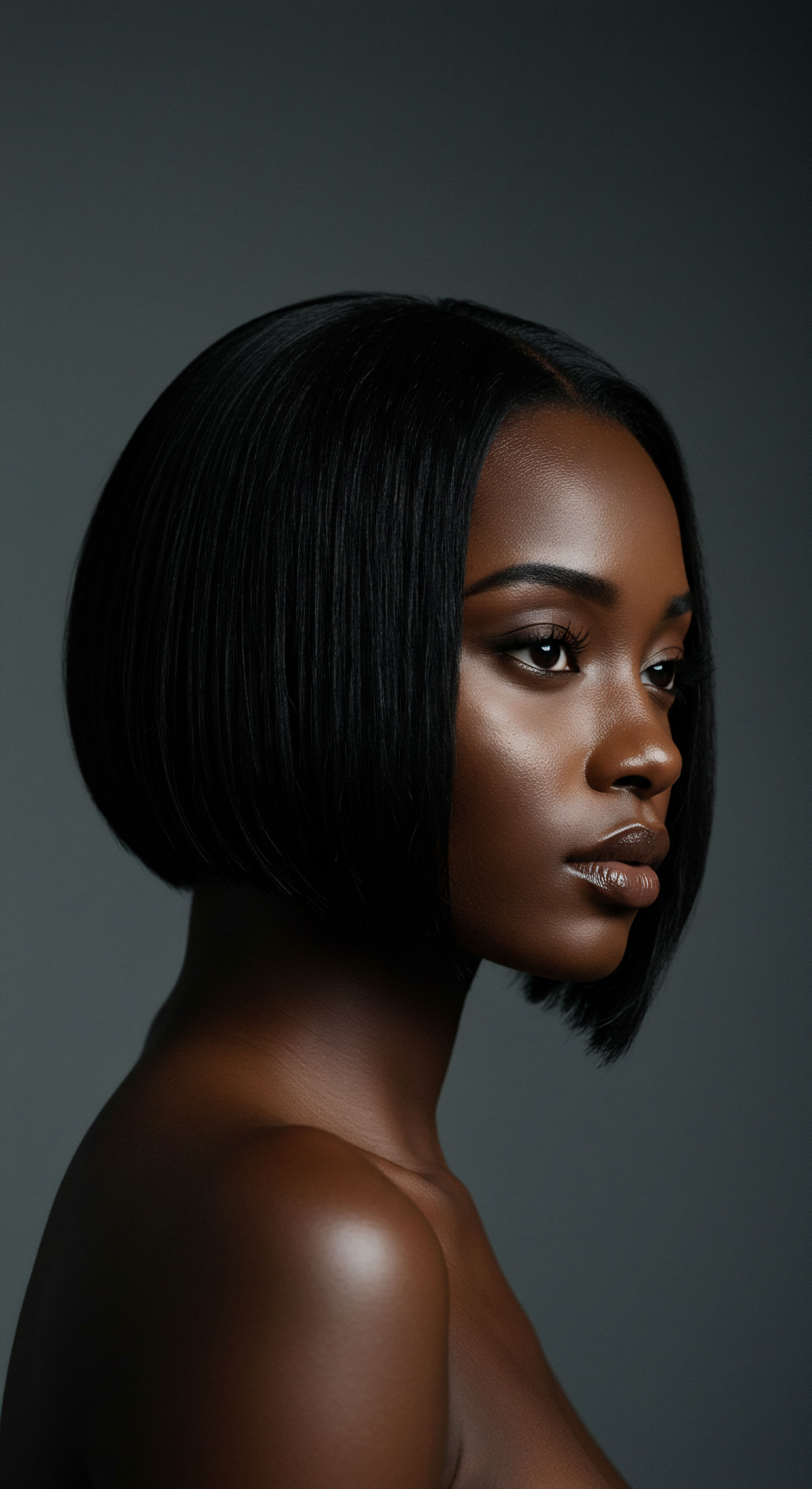
Reflection
Our exploration into pure henna and its relationship with textured curls has brought us through layers of understanding, from the intricate dance of keratin and lawsone to the broader tapestry of cultural practice and scientific inquiry. It becomes clear that the whispers of henna’s curl-loosening abilities are not rooted in chemical alteration but in a more subtle, mechanical transformation. The hair, coated and strengthened, responds differently to gravity and its own inherent spring, leading to a visible elongation rather than a fundamental shift in its curl pattern.
This distinction is not merely academic; it shapes our expectations, guides our care routines, and allows us to approach our textured strands with a more profound appreciation for their natural state. As we continue to seek balance between ancient wisdom and contemporary science, the story of henna reminds us that beauty lies not in altering what is, but in understanding and enhancing the unique qualities of our natural heritage.

References
- Jachowicz, L. R. & Jachowicz, S. L. (2007). The effect of natural dyes on the mechanical properties of human hair. Journal of Cosmetic Science, 58(2), 101-115.
- Robbins, C. R. (2012). Chemical and Physical Behavior of Human Hair (5th ed.). Springer Science+Business Media.
- Gopinath, H. & Jachowicz, J. (2015). Hair Care ❉ An Illustrated Dermatologic Guide. CRC Press.
- Wall, F. E. (1947). The chemistry of hair dyes. Journal of the Society of Cosmetic Chemists, 1(1), 21-39.
- Dawber, R. & Van Neste, D. (1995). Hair and Scalp Disorders ❉ Medical and Surgical Management. Blackwell Science.
- Kasprzak, M. (2019). The use of natural dyes in hair coloring. Journal of Natural Products Research, 33(7), 1021-1035.
- Bhushan, B. (2010). Biomaterials ❉ A Comprehensive Introduction. Springer.
- Verma, S. & Gupta, A. (2018). Herbal hair dyes ❉ A review. International Journal of Pharmaceutical Sciences Review and Research, 50(2), 22-28.